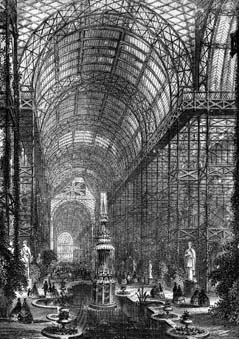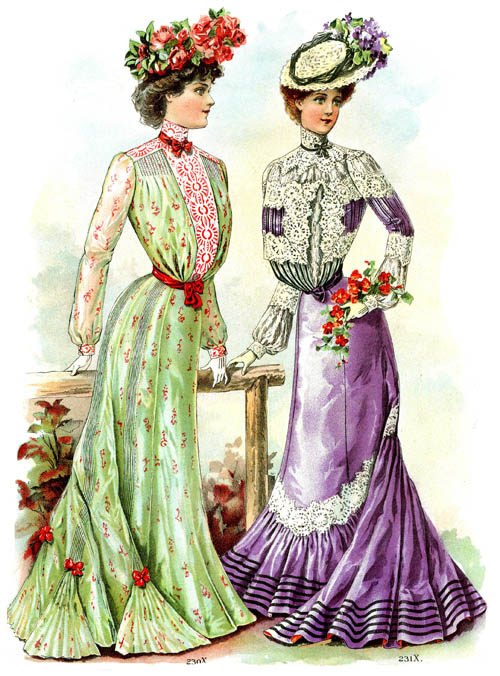|
Home > Victorian London > Museums, Galleries, Libraries & Exhibitions

|
One great controversy in Victorian London was whether museums, art galleries and other places of culture should open to the public on Sundays. Those in favor pointed out that this was the only day available to most working people, who were otherwise prevented from benefiting from these institutions. Many felt that keeping museums open would give working folk an alternative to the pub. Others, however - including the Lord's Day Observance Society - felt that Sundays should remain sacred, and people shouldn't spend it doing something secular like visiting a musuem or art gallery. The Maidstone Museum was the first to open on Sundays, in 1878 (but it stopped three years later). By 1888, several museums opened on Sundays, but it wasn't until 1896 that the House of Commons approved a motion to open all national museums and galleries on Sunday afternoons.
|
- Architectural Museum, Brompton
(Gentleman's Magazine, 1859)
- The article provides a wonderful description of 15th-century manorhouses.
- Literary and Scientific Corporations & Institutions (in London)
(Illustrated London Almanack, 1851)
- Principle Public & Private Exhibitions in and Near London
(Illustrated London Almanack, 1851)
- The Collection of British Antiquities in the British Museum, by Augustus W. Franks
(Archaeological Journal, 1852)
- Annual Sights, Customs and Shows in London (for 1855)
(Illustrated London Almanack, 1855)
- Annual Customs, Sights, and Shows, in London
(Illustrated London Almanack, 1857)
- Free and Other Exhibitions
(Illustrated London Almanack, 1866)
- Museums as Aids to Education
(Leisure Hour, 1868)
- The value of local and provincial museums (and some uncomplimentary remarks on the British Museum).
- Societies & Institutions; Museums
(Illustrated London Almanack, 1872)
- The British Museum and Its Reading Room
(Harper's Monthly, 1873A)
- The South Kensington Museum
(Harper's Monthly, 1875B)
- The Loan Exhibition of Scientific Apparatus, by Samuel Highley
(Cassell's Family Magazine, 1876)
- An Exhibition at the South Kensington Museum.
- Societies & Institutions
(Illustrated London Almanack, 1876)
- Learned and Other Societies
(Illustrated London Almanack, 1877)
- Reading at the British Museum
(Cassell's Family Magazine, 1879)
- Saturday Night in a Free Library, by Rev. Frederic Wagstaff
(Cassell's Family Magazine, 1882)
- The Library of the British Museum, by Richard Garnett (Cassell's Family Magazine, 1886)
- The Royal Academy [of Art], by F. Grant
(Harper's Monthly, 1889A)
- Two Little-Known London Libraries [The Patent Office Library and the Ronalds Library]
(Cassell's Family Magazine, 1890)
- Students' Day at the National Gallery, by Frances A. Gerard
(Cassell's Family Magazine, 1893)
- On Thursdays and Fridays, art students and others flocked to the National Gallery to make copies of famous paintings, either for their own use or for sale on commision.
- In Our National Library, by M. San-Leon
(The Strand, 1895A)
- The Romance of the Museums, by William G. FitzGerald
(The Strand, 1896A)
- The Vagabonds' Museum, by T. Artemus Jones
(Windsor Magazine, 1896B)
- A collection of artifacts gathered from beggars, tramps and vagabonds, exhibited by the London Society for the Suppression of Mendicity (begging).
- The GPO [General Post Office] Museum, by Framley Steelcroft
(The Strand, 1897B)
- Curiosities of the Post and the history of the postal service.
- How a Great Museum Grew, by A.K. Page
(Windsor Magazine, 1899B)
- The museum of the Royal College of Surgeons.
- Sandow in Plaster of Paris
(Strand, 1901B)
- How - and why - the British Museum made a plaster cast of Strong Man Eugen Sandow.
- Things of Most Price in the British Museum, by Rudolph de Cordova
(Strand, 1901B)
- The Elgin Marbles, the Portland Vase, an expensive mummy - a look at the most valuable items in the British Museum's collection.
-
|
The Great Crystal Palace Exhibition
|

|
"The Great Exhibition of the Works of Industry of All Nations" of 1851, also known as the Crystal Palace Exhibition, was designed to celebrate "modern industrial technology and design" and showcase Britain's achievements to the rest of the world. It set the stage for exhibitions and world fairs to come. The Crystal Palace was built specifically for this event. Originally built in Hyde Park, it was relocated to Penge Common near Sydenham Hill in 1854, where it stood until burning down in 1936. The Crystal Palace was used for a number of events, fairs, shows and exhibitions after its move (for more info, see The Crystal Palace Foundation). It has the distinction of being the first such installation to offer public toilets! It was also the site of the first public showing of a moving picture.
|
- History of the Great Exhibition
(Illustrated London Almanack, 1852)
- Details on the founding and organization of the Great Exhibition, including portraits of the major officials involved, statistics and returns. (Also includes a list of officials involved, from the 1851 volume.)
- Opening of the Great Exhibition
(Illustrated London Almanack, 1854)
- The Crystal Palace Poultry, Pigeon and Rabbit Show
(Illustrated London Almanack, 1860)
- Two Ways of Looking at It
(Girl's Own Paper, 1892)
- Two letters describing a visit to London and the Exhibition.
|
Visit Our Victorian Shop
for:
Books
Coloring Books
Beautiful Spiral Journals
Holiday Greeting Cards
|
|


 Discover thousands of Victorian images in our
Discover thousands of Victorian images in our 
